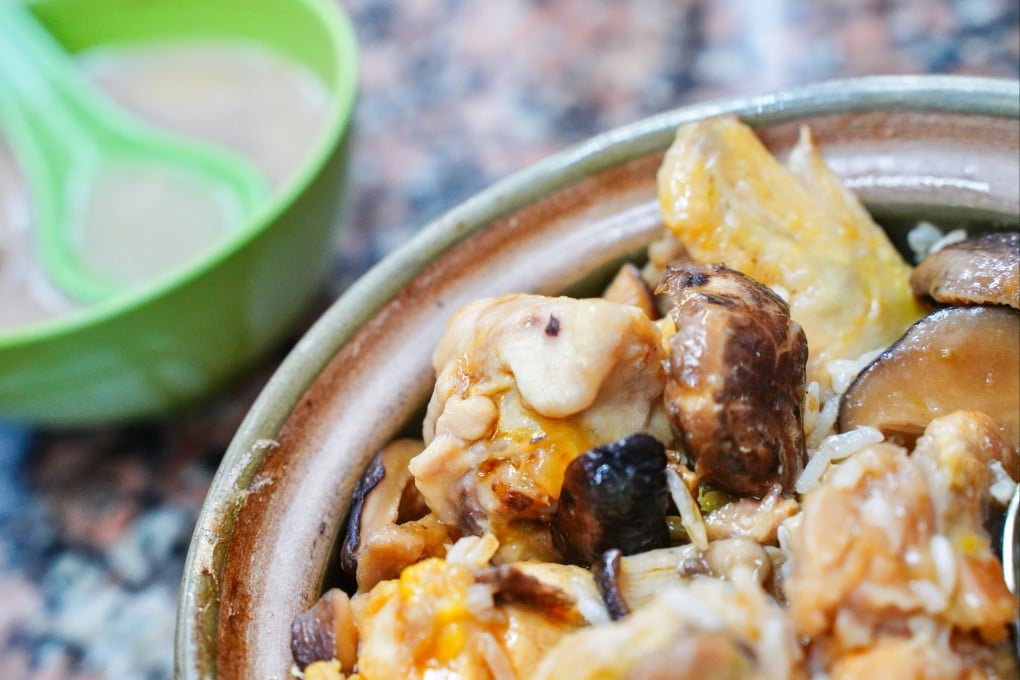The Hong Kong diner that’s served traditional claypot rice since 1971
Step inside 53-year-old Wing Hop Sing, where a local family specialises in the cosy winter warmer dish – but how much longer will the claypot eatery last?


For Kitty Hui, one of the owners of Wing Hop Sing, the restaurant has been a fixture for virtually her entire life. Opened by her father in 1971, when she was 12 years old, the restaurant has moved twice, most recently from Sheung Wan to its location of 10 years, on Des Voeux Road West, in Shek Tong Tsui. A legion of loyal patrons accrued over the years have earned the place a reputation for consistent quality and warm hospitality.

Hui operates in English and Cantonese, offering an English menu when she clocks my Caucasian face. She informs the lunch regulars that the soup of the day is a hearty broth of tomato, carrots, cabbage and potato, with delicately sweet and tender pork ribs.
One of Wing Hop Sing’s specialities is the fresh stir-fried yellow eel with onions and Chinese chives. Equally popular is the hand-sliced beef claypot topped with a raw egg, to be mixed in by the diner, cooking as it makes contact with the hot rice and coating each grain with gold.

As the claypot’s lid is lifted, a waft of steam tinged with the aroma of the roasting rice rises, becoming even more enticing as it sizzles when I pour in the sweet, dark soy sauce. Now the work begins: merging the rice and its toppings. Armed with a thin metal spoon, one must excavate the caramelised rice that is fused to the bottom of the pot. It surfaces in satisfying swathes of golden brown, making for a contrasting sensation of crisp and soft once mixed in with the pillowy rice above.
“Hometown” steamed chicken claypot is another notable Wing Hop Sing speciality. It is seasoned with chillies and fuyu, a paste made of fermented bean curd that becomes creamy and pliant as an enzymatic process breaks down the tofu. The flavour is nutty and complex yet mild like a ripe Brie cheese and, when it melds with the yellow fat from the chicken, becomes something akin to French coq au vin. Hui cautions against adding the obligatory sweet soy sauce, since the fuyu packs its own salty punch that is mellowed out by the sweet neutrality of claypot rice.

Like so many of Hong Kong’s long-standing local eateries, there are no plans to pass the business on to a third generation. “Our children have their own lives,” says Hui. And so, Wing Hop Sing seems fated to join a dying breed of restaurants that won’t be around when its current proprietors opt to retire. As an outsider with what is, admittedly, a penchant for generational restaurants, it’s bittersweet to think that Wing Hop Sing’s years are likely numbered.
After my visit, I peruse reviews on a local restaurant listings platform, expecting to read about the authentic cooking and quality ingredients. Oddly, Wing Hop Sing has a rather lacklustre 3.5/5 rating, the main complaint being that they charge upwards of HK$85 per claypot, with an additional HK$10 fee to make the rice extra crispy (which requires a longer cooking time.) As one user puts it, “$130 for a claypot rice is not worth it,” despite the same reviewer having happily spent hundreds of dollars on Italian pasta, Japanese donburi bowls and burgers.
